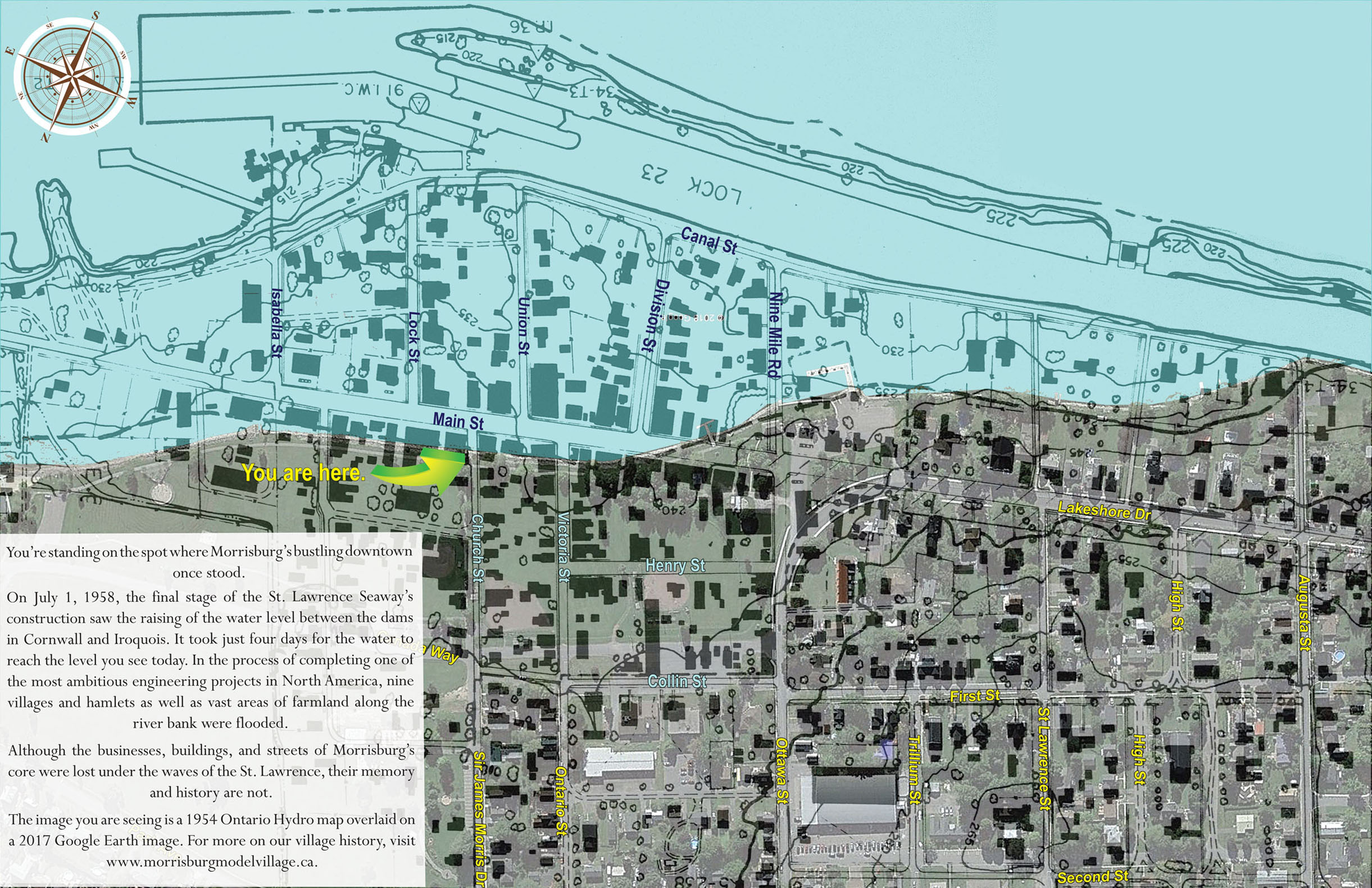
Depicting Morrisburg as it was
before the Seaway flooding in 1958.
Directly linked to a new "Then & Now" Sign on the waterfront path -
overlooking where the old Morrisburg downtown now lies under the St.
Lawrence River.
The History
The St Lawrence Seaway was constructed in the 1950s to
accomplish two major objectives: br>1) To significantly
increase the size of cargo ships able to navigate all the way
from the Atlantic Ocean to the Great Lakes; and
2) To
add substantially to the hydro electric generation capability
of the St Lawrence River for both Canada and the US.
The major impact was to significantly raise the river water
levels between the Cornwall Power Dam and the Iroquois Control
Dam. This in turn flooded major areas of farm land and nine
villages and hamlets that were lost altogether. In addition
most, of Iroquois had to be moved back away from the river and
the downtown area of Morrisburg was lost under the St.
Lawrence River.
The flooding started on
1 July, 1958 when the
temporary coffer dams were breached. It only took four
days for the water to reach its new (and current) levels.
The following links provide more information, including
many pictures and maps:
St Lawrence Piks Seaway History,
Lost
Villages Museum,
Ghost Town Pix Lost Villages.
The
Virtual Morrisburg Model Village describes the pre-seaway area of the village from
Augusta Street in the west to the east end of
old Lock 23 (south of the current location of
the Cruickshank Amphitheatre) and from
First Street in the north to the south end of
Lock 23 (about 300m south from Cruickshank
Amphitheatre shoreline). This is an area of about 920m E to W
by 570m N to S.
Flood Day 1 July 1958 - 1950s Old Morrisburg from the South East - From the South West
Pictures from the old downtown Main Street.





